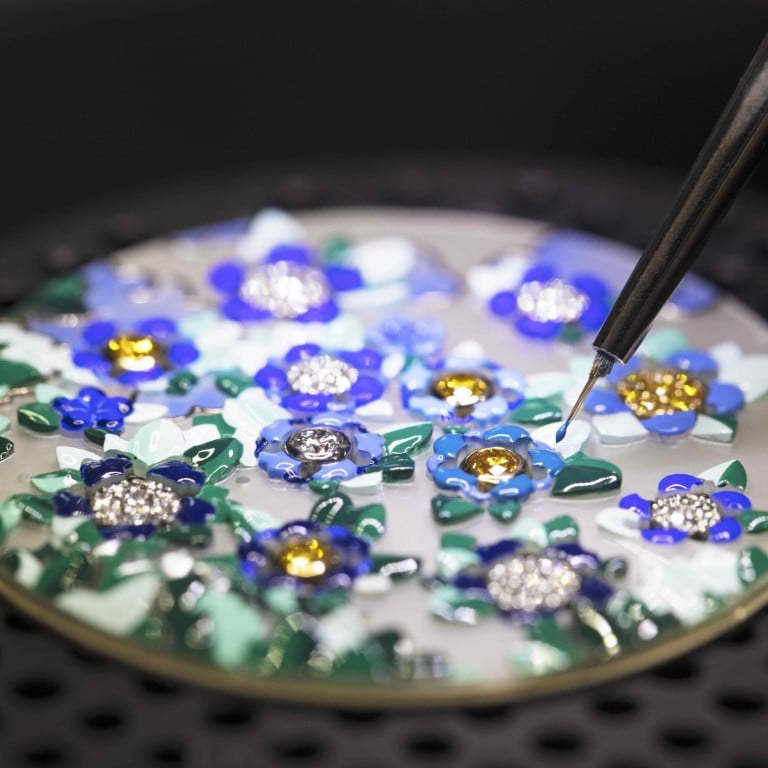Why do more jewellery watches feature mechanical movements, not just quartz? Richard Mille, Vacheron Constantin, Piaget, Van Cleef & Arpels and Chanel bring more complications to women’s timepieces

- Vacheron Constantin Traditionnelle Perpetual Calendar Ultra-thin, Richard Mille RM 07-01 Snow Set and Van Cleef & Arpels Lady Arpels Heures Florales are all among the new wave
- Chanel’s Mademoiselle Privé Bouton collection and Chopard Happy Sport Metiers d’Art also embrace the technical smarts to go with the decorative arts
At the end of March 2022, Vacheron Constantin launched the Traditionnelle Perpetual Calendar Ultra-thin with a mother-of-pearl dial. This slim timepiece, a mere 4.05 millimetres thick, is “a response to women’s growing desire for complex mechanical timepieces”, the brand stated. The complex function here, which needs no setting for another 78 years, is surrounded by a bezel and lugs set with 77 flawless diamonds – proof that sparkling jewellery watches are becoming far more evolved.

A year prior, Richard Mille had launched the RM 07-01 Snow Set, bringing its own take on the highly bejewelled mechanical watch movement for women.
Chopard’s co-CEO and artistic director Caroline Scheufele says it is obvious why the field has moved on from quartz-powered aesthetics combined with jewels.

“In the past it was taboo to make mechanical watches for women,” she told STYLE on the fringes of this year’s Watches & Wonders event in Geneva, Switzerland. “This idea reigned that we don’t like or understand them. But this is not true – women should not be deprived of mechanical movements. I like cars with powerful engines. In my house I know where the heating is. Women are pilots. So why should we not appreciate what is inside a watch? I think it is about time we have access to mechanical movements.”

For Chopard, the journey was apparently inspired by Asian women craving mechanical movements. Most brands are coy about exact numbers, but according to Scheufele, no less than 40 per cent of Chopard’s women’s watches today are mechanical – with the Happy Sport Metiers d’Art being the clearest embodiment of the strategy. “There you have the combination of the beauty, the creation, the dreams, plus the movement. I think this is the perfect world,” Scheufele says.
Fabrizio Buonamassa Stigliani, executive director of product creation at Bulgari, agrees on where the trend started. “Thanks to Asian collectors, we have a general evolution in terms of watchmaking … 20 to 30 years ago they started pushing a lot for mechanical movements, which made the brands develop new complications.
“Today this is prevalent in ladies’ watches, where we can see a lot of high jewellery pieces with high complications. Again, this is thanks to Asians – the Asian woman collector doesn’t just want to wear a jewellery piece with a quartz movement, she loves mechanical watches.”
